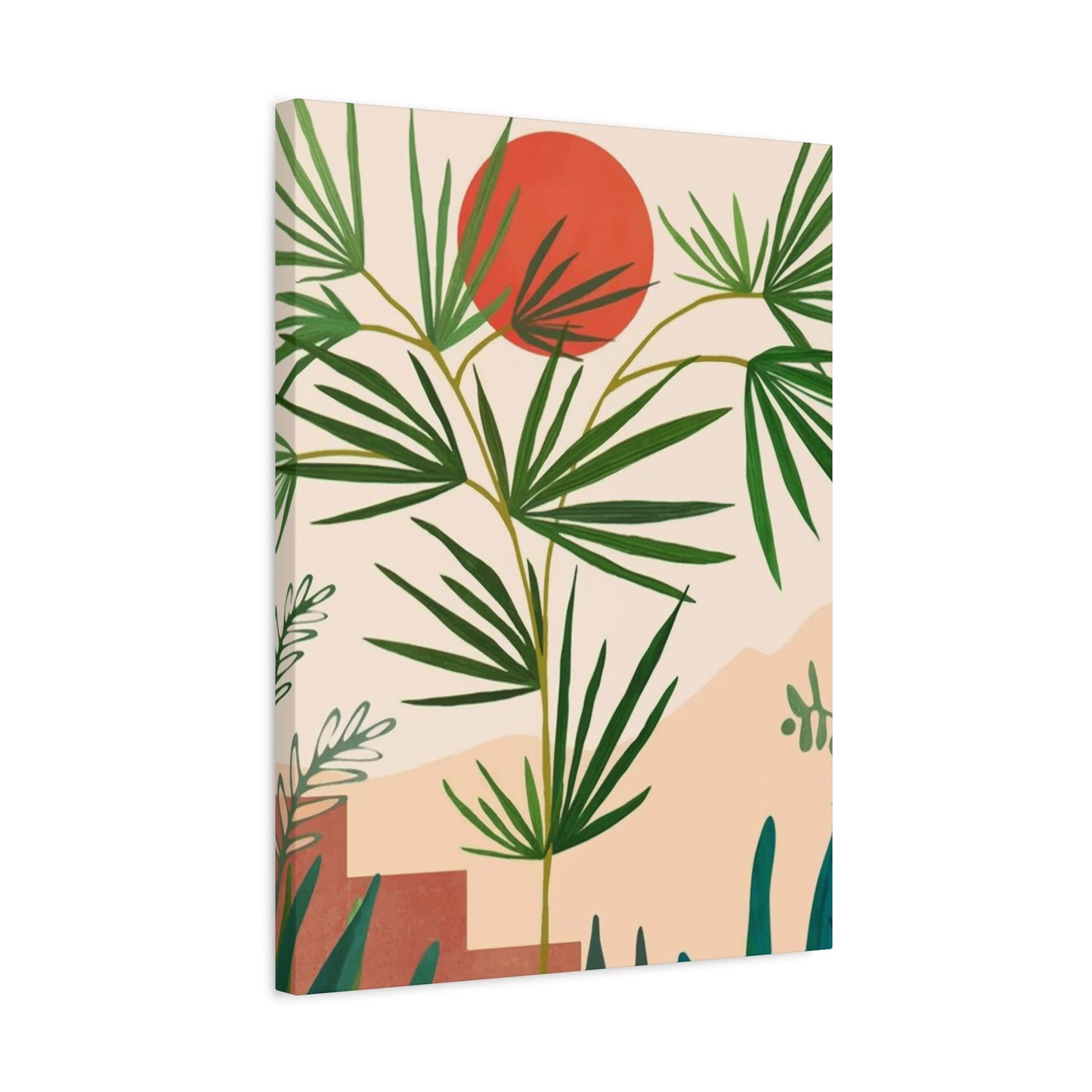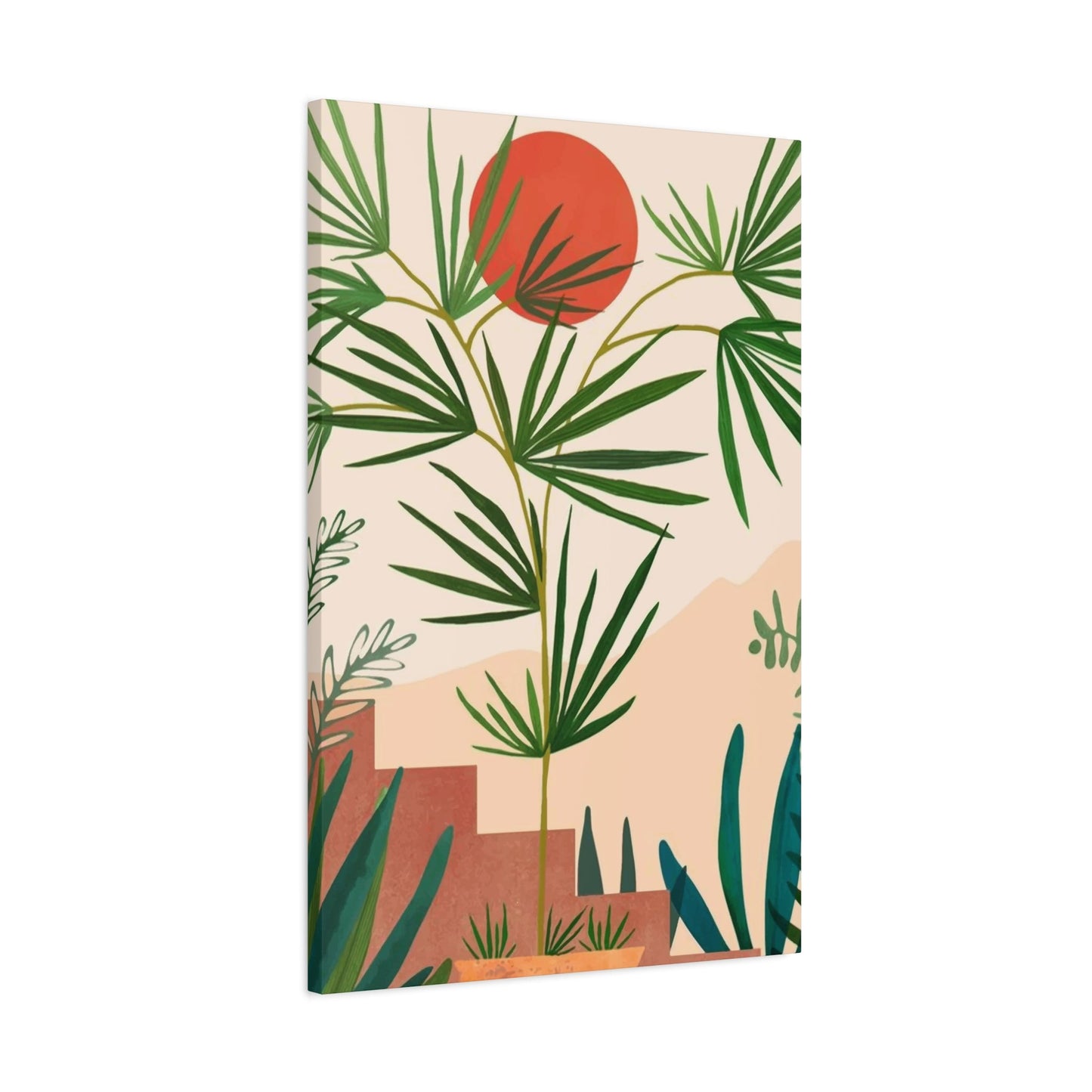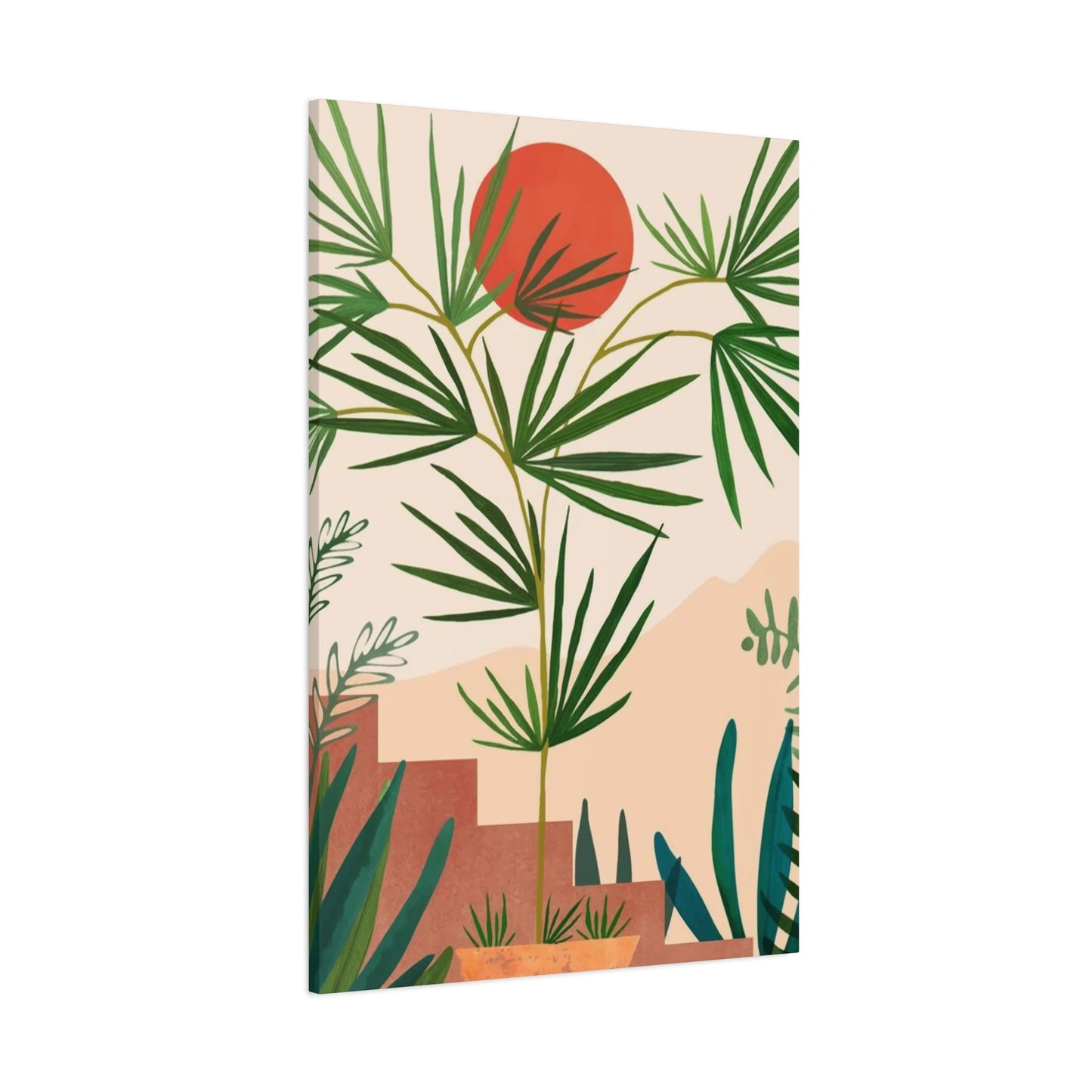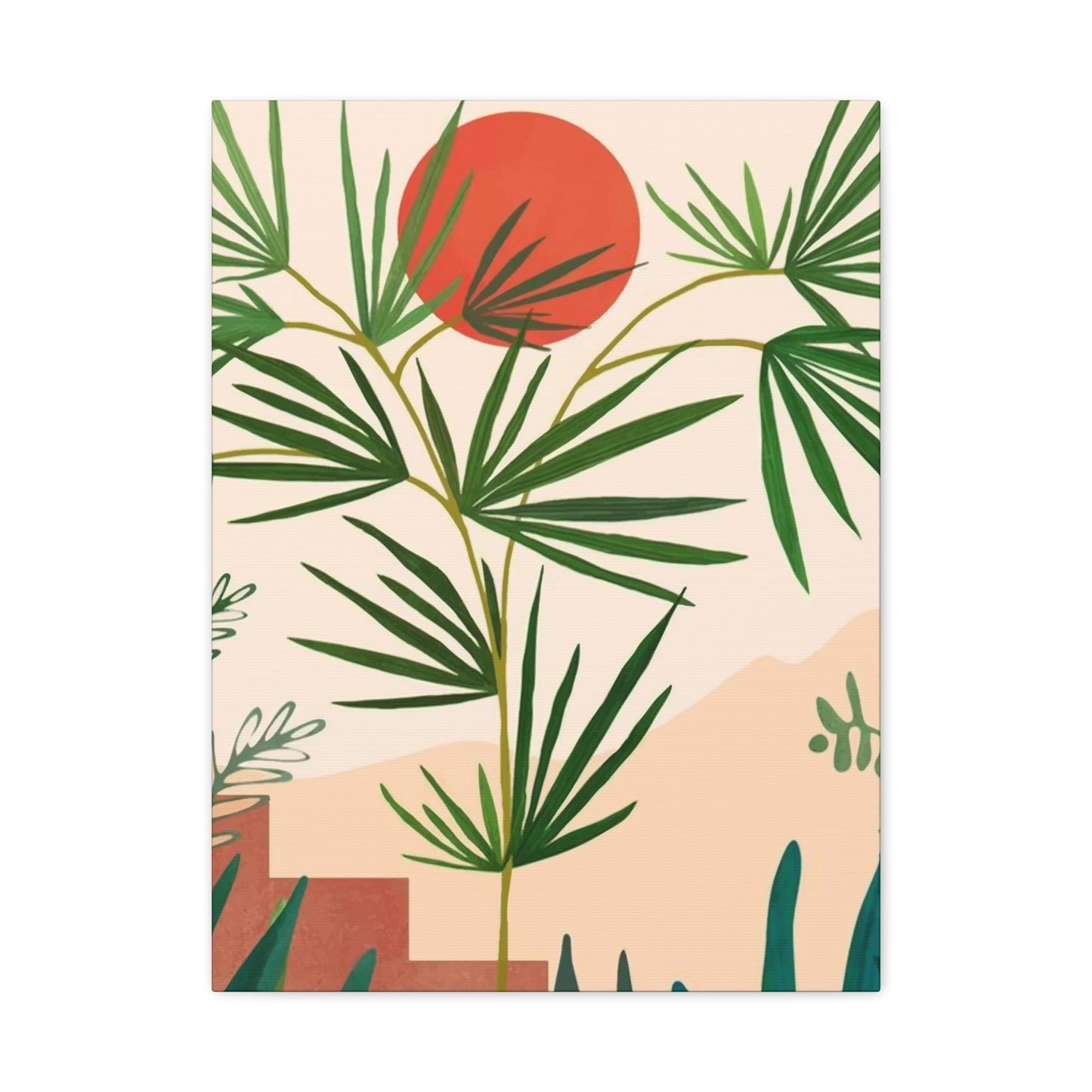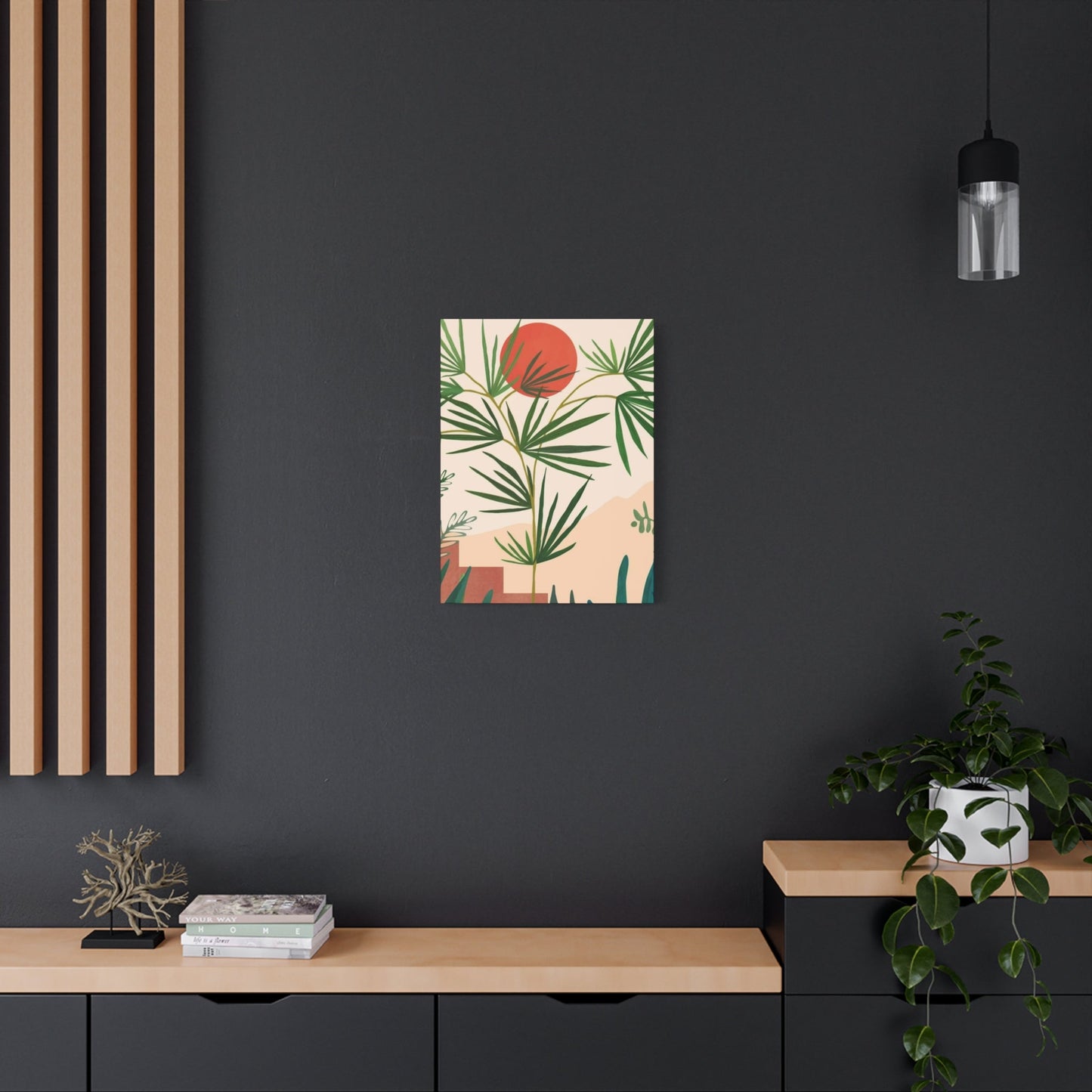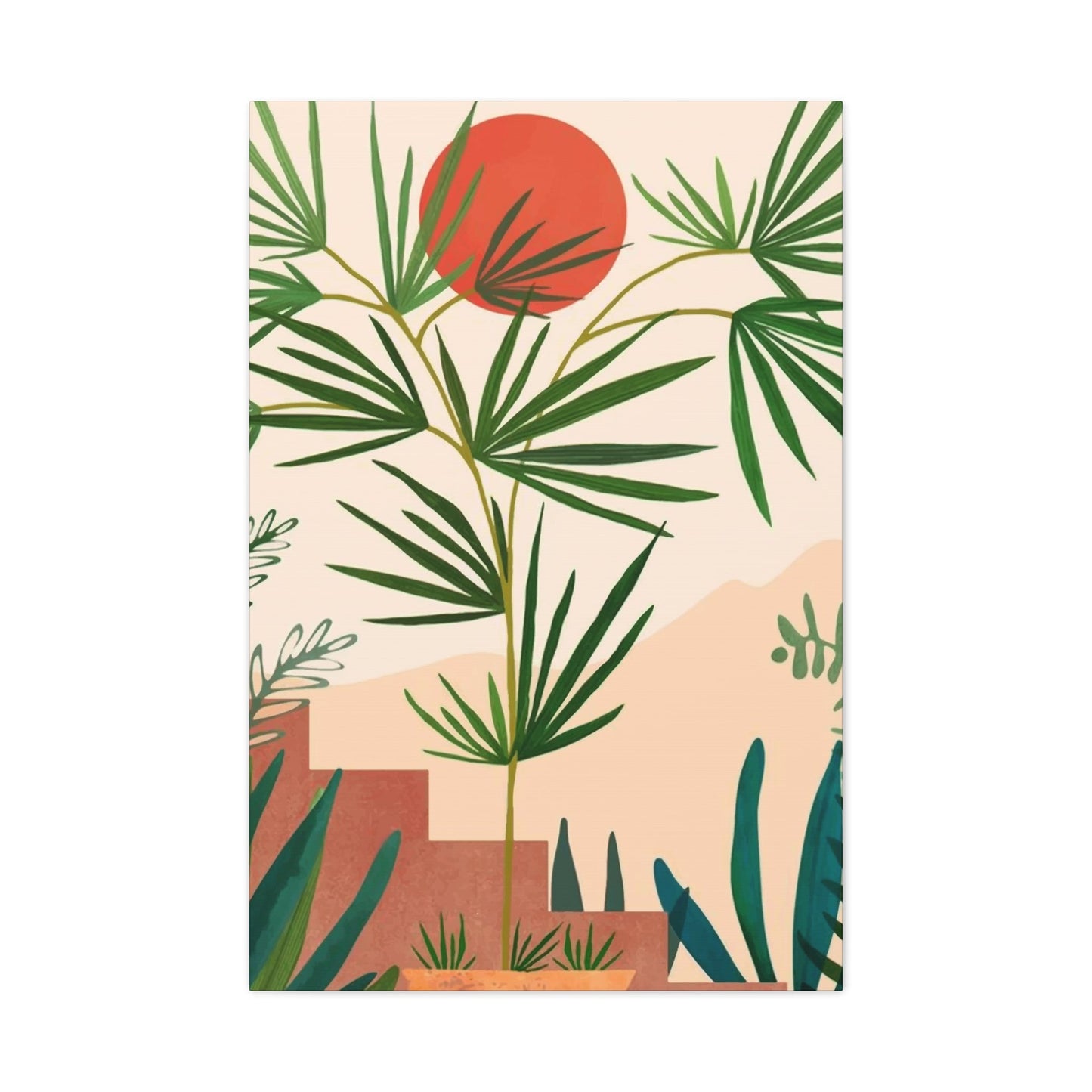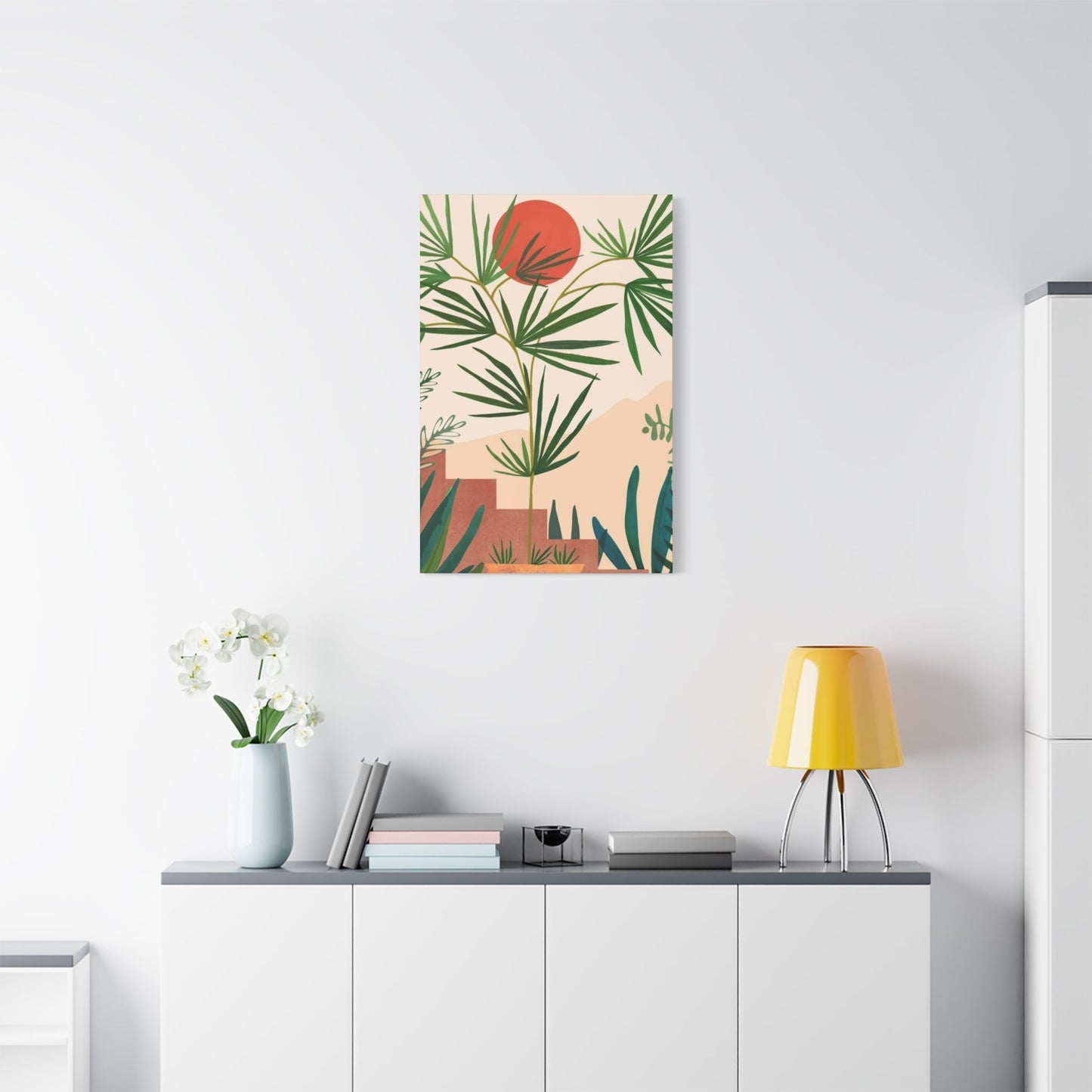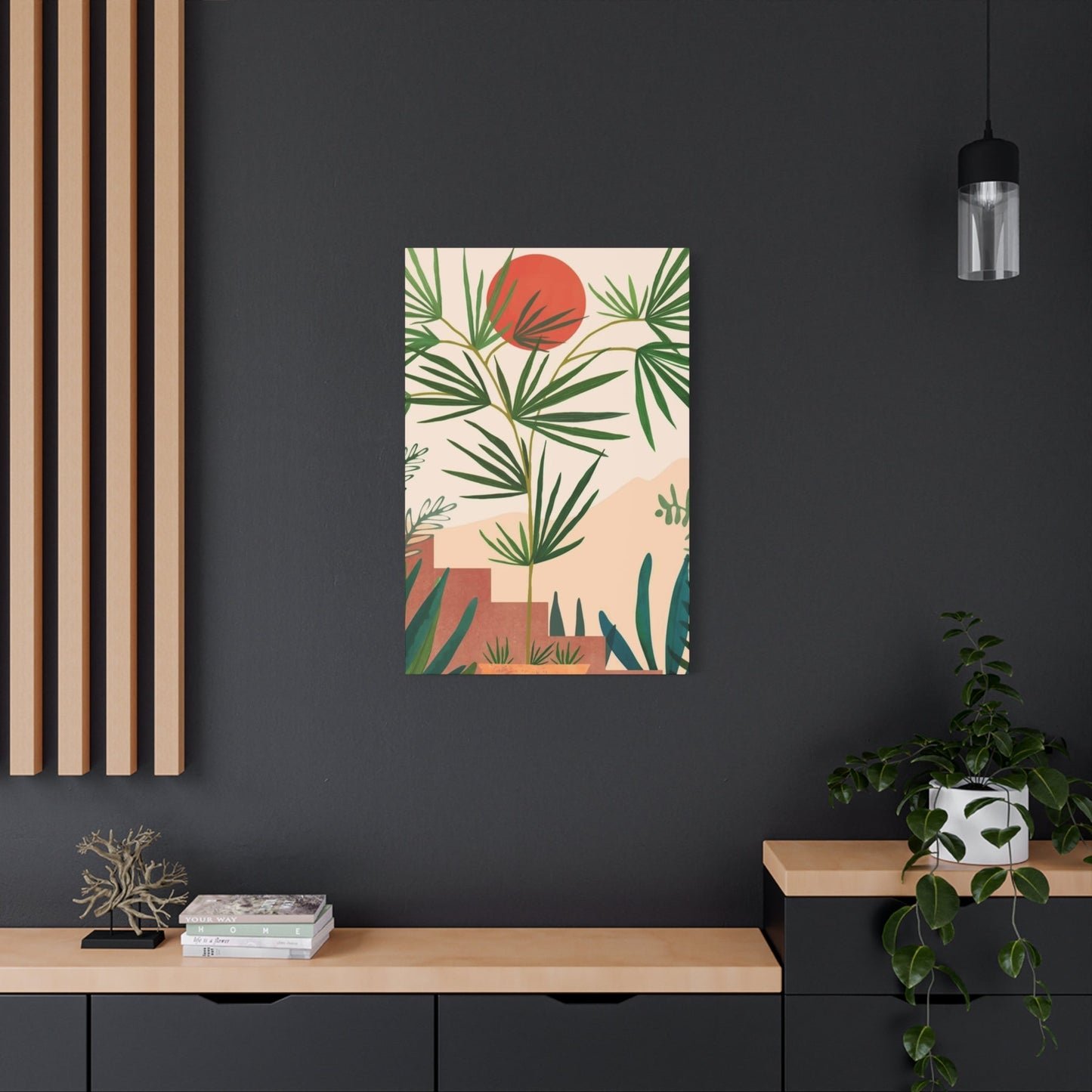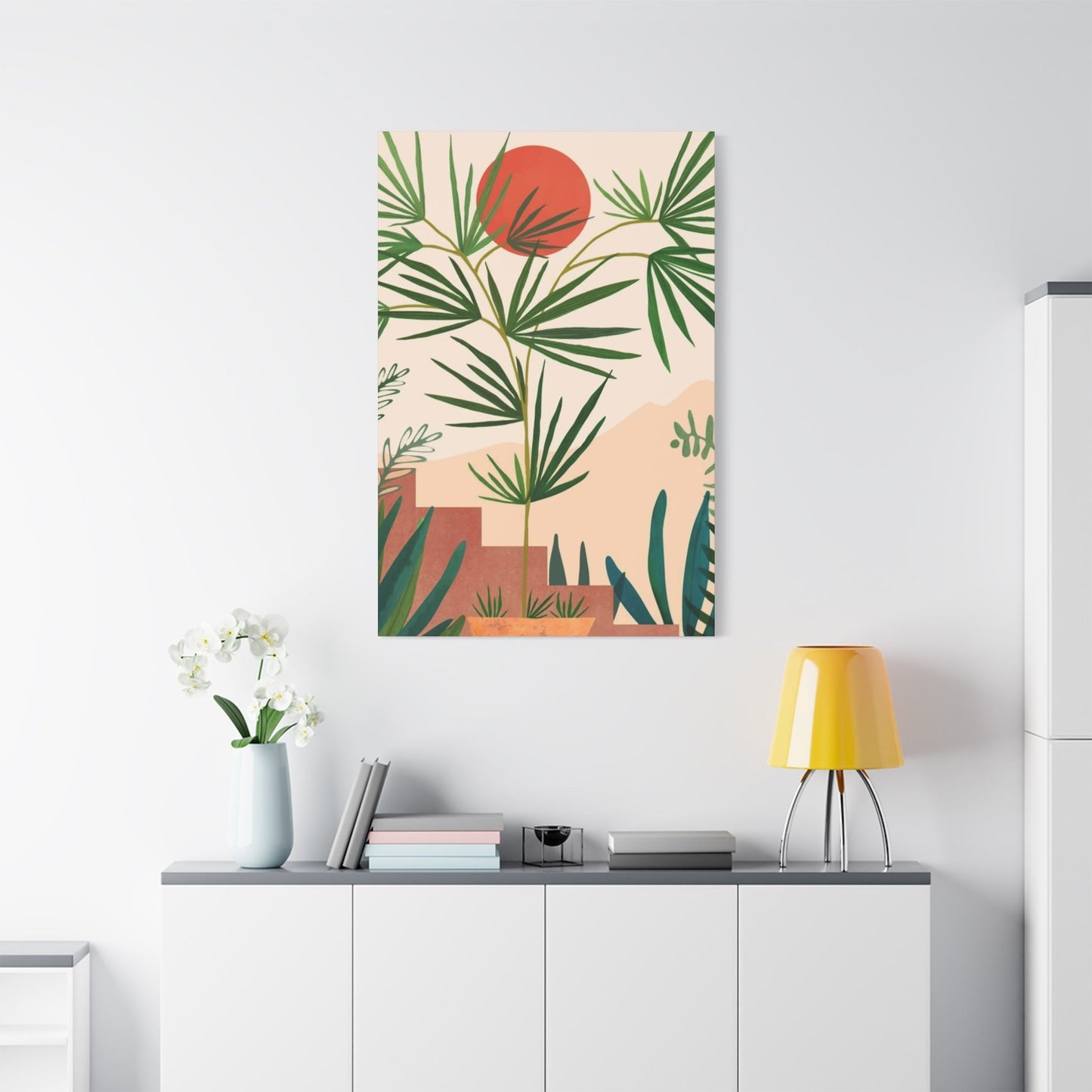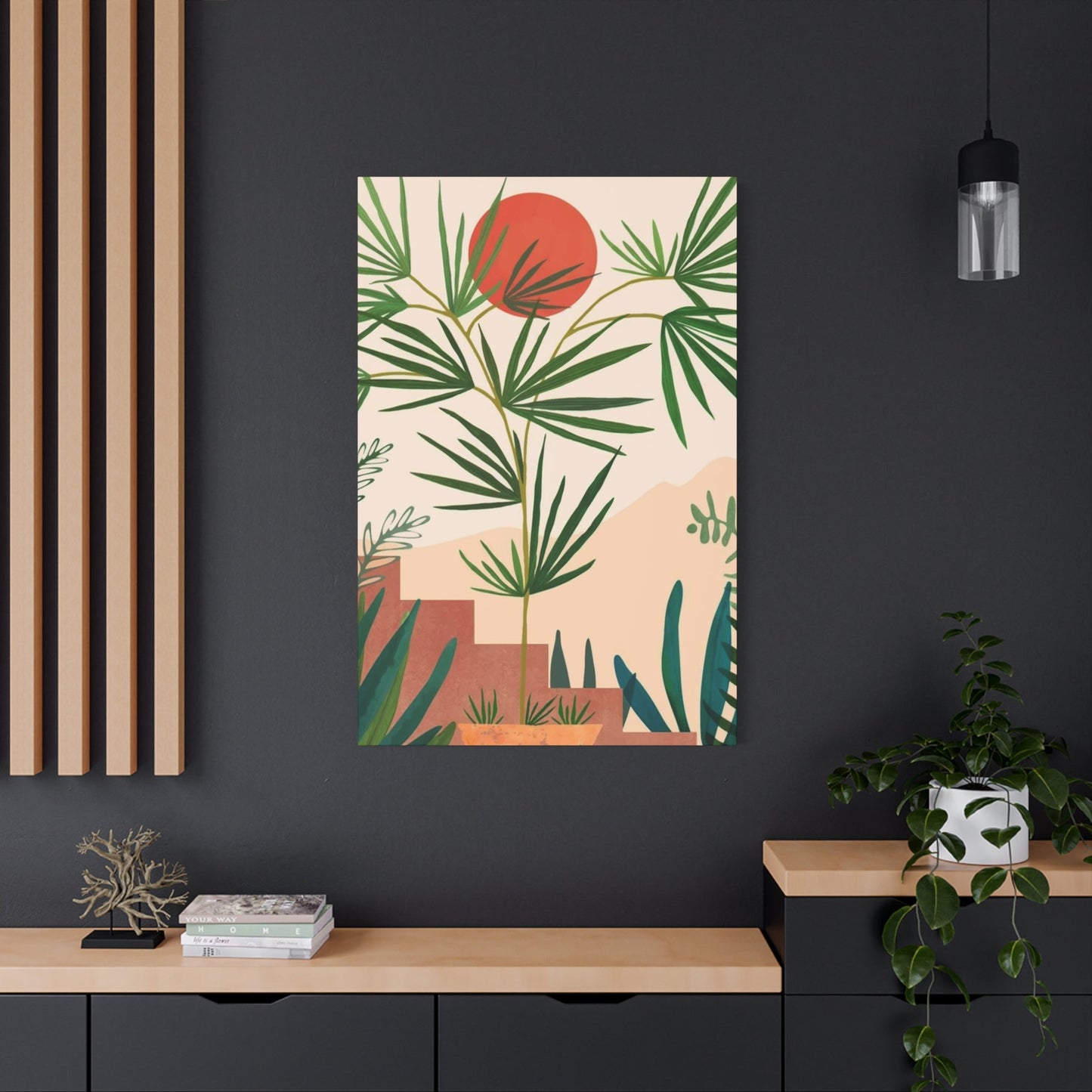Mid Century Wall Art: Bringing Retro Elegance to Contemporary Interiors
Mid century wall art represents a distinctive design movement that emerged between 1945 and 1965, characterized by clean lines, bold geometric patterns, and innovative use of color and materials. This artistic style continues to captivate homeowners and interior designers today, offering a perfect blend of vintage sophistication and contemporary appeal. The enduring popularity of mid century aesthetics stems from its ability to create spaces that feel both nostalgic and refreshingly modern, making it an ideal choice for those seeking to infuse their homes with character and visual interest.
The mid century design philosophy emphasized functionality without sacrificing beauty, resulting in artwork that serves as both decorative elements and conversation starters. These pieces typically feature abstract compositions, atomic-age motifs, and nature-inspired themes rendered in vibrant color palettes that can instantly energize any space. From subtle earth tones to bold primary colors, mid century wall art offers versatility that complements various interior design schemes while maintaining its distinctive retro charm.
Today's homeowners are increasingly drawn to mid century wall art because it provides an authentic connection to a pivotal era in design history while remaining remarkably relevant to contemporary living spaces. The movement's emphasis on simplicity, functionality, and artistic expression resonates with modern sensibilities, making it easier than ever to incorporate these timeless pieces into current home decor trends. Whether you're looking to create a complete mid century aesthetic or simply add vintage accents to your existing decor, understanding the principles and characteristics of this design movement is essential for making informed choices that will enhance your living environment for years to come.
Nostalgic Appeal and Retro Aesthetics in Contemporary Design
The nostalgic appeal of mid century wall art lies in its ability to transport viewers to an era of optimism and innovation. During the post-war period, artists and designers embraced new materials, technologies, and artistic techniques, creating works that reflected the era's forward-thinking spirit. This optimistic outlook is evident in the bright colors, playful patterns, and dynamic compositions that define mid century artwork, making these pieces particularly effective at creating welcoming and inspiring environments in modern homes.
Retro aesthetics have experienced a remarkable resurgence in recent years, with mid century design elements becoming increasingly sought after by collectors and decorating enthusiasts. This renewed interest stems partly from a desire to incorporate authentic vintage elements into contemporary spaces, creating interiors that feel curated and personal rather than generic or mass-produced. Mid century wall art serves as an accessible entry point into this design movement, allowing homeowners to experiment with vintage aesthetics without committing to a complete room makeover.
The psychological impact of mid century wall art cannot be understated. These pieces often evoke feelings of warmth, comfort, and familiarity, creating emotional connections between viewers and their living spaces. The organic shapes and natural motifs commonly found in mid century artwork tap into our innate appreciation for nature, while the bold geometric patterns and atomic-age designs reflect humanity's fascination with progress and scientific advancement. This dual appeal to both natural and technological themes makes mid century wall art particularly versatile and enduring.
Contemporary designers frequently draw inspiration from mid century aesthetics when creating modern interpretations of classic designs. This approach results in new artwork that captures the essence of the original movement while addressing current trends and preferences. By incorporating both authentic vintage pieces and contemporary interpretations into their homes, decorating enthusiasts can create layered, sophisticated spaces that honor the past while remaining relevant to present-day living.
The craftsmanship evident in original mid century wall art also contributes to its enduring appeal. Many pieces from this era were created using techniques and materials that emphasized quality and longevity, resulting in artwork that has maintained its visual impact and structural integrity over decades. This attention to quality serves as a stark contrast to much of today's mass-produced decor, making authentic mid century pieces particularly valuable and desirable for collectors and design enthusiasts who appreciate superior craftsmanship and materials.
Contemporary Applications of Mid Century Canvas Artwork
Modern living spaces benefit tremendously from the integration of mid century canvas prints, which offer an accessible way to incorporate vintage design elements without the expense and rarity associated with original pieces. Contemporary canvas reproductions capture the essential characteristics of mid century artwork while providing the durability and affordability that today's homeowners require. These modern interpretations maintain the authentic color palettes, geometric patterns, and artistic sensibilities of the original movement while being produced using current printing technologies that ensure longevity and fade resistance.
The versatility of mid century canvas prints makes them suitable for virtually any contemporary interior design scheme. Whether your home features industrial elements, Scandinavian minimalism, or eclectic bohemian touches, mid century artwork can serve as a unifying element that ties disparate design elements together. The neutral backgrounds and bold accent colors commonly found in these pieces allow them to complement existing color schemes while adding visual interest and personality to previously bland walls.
Canvas prints offer practical advantages that make them particularly well-suited to modern living. Unlike original artwork or pieces framed under glass, canvas prints are lightweight, easy to hang, and resistant to damage from humidity and temperature fluctuations. This durability makes them ideal for high-traffic areas, bathrooms, kitchens, and other spaces where traditional framed artwork might be impractical. Additionally, the texture inherent in canvas material adds depth and dimension to reproduced artwork, creating visual interest that flat prints cannot match.
The sizing options available with contemporary canvas prints allow for unprecedented flexibility in decorating choices. From small accent pieces that can be grouped together to create gallery walls, to oversized statement pieces that serve as room focal points, canvas prints can be customized to fit any space and design vision. This scalability makes it possible to create cohesive design schemes throughout entire homes, using mid century aesthetics as a connecting thread between different rooms and areas.
Quality considerations are paramount when selecting mid century canvas prints for contemporary spaces. Look for reproductions that use archival-quality inks and premium canvas materials to ensure that colors remain vibrant and the artwork maintains its appearance over time. Many reputable producers also offer UV-resistant coatings that further protect against fading, making these pieces suitable for rooms with abundant natural light. The investment in quality materials pays dividends in terms of longevity and continued satisfaction with your decorating choices.
Creating Focal Points with Mid Century Statement Art
Statement pieces in mid century wall art serve as powerful focal points that can instantly transform the character and energy of any room. These larger, more dramatic works command attention and establish the aesthetic tone for entire spaces, making them essential elements in successful interior design schemes. When selecting statement pieces, consider works that feature bold color combinations, striking geometric patterns, or iconic mid century motifs such as atomic symbols, boomerang shapes, or stylized natural forms that immediately communicate the vintage aesthetic.
The placement of statement art requires careful consideration of room proportions, existing furniture arrangements, and natural lighting conditions. Large mid century pieces work best when positioned where they can be appreciated from multiple vantage points, such as above sofas, behind dining tables, or on walls visible from entryways. The surrounding space should be kept relatively simple to avoid competing with the artwork, allowing the statement piece to shine as the undisputed centerpiece of the room's design scheme.
Color coordination between statement art and existing decor elements requires a delicate balance between harmony and contrast. Mid century statement pieces often feature bold, saturated colors that can either complement or deliberately contrast with room color schemes. When working with neutral room palettes, a vibrant mid century statement piece can serve as the primary source of color in the space, informing subsequent decorating decisions and creating a cohesive design narrative throughout the room.
Scale relationships are crucial when incorporating statement art into room designs. The artwork should be appropriately sized for both the wall space and the room's overall proportions, creating visual balance without overwhelming the space or appearing insignificant. As a general rule, statement pieces should occupy approximately two-thirds to three-quarters of the available wall space, leaving enough breathing room around the edges to prevent the composition from feeling cramped or crowded.
Lighting plays a critical role in showcasing statement art effectively. Natural light can enhance the vibrant colors typical of mid century artwork, but direct sunlight should be avoided to prevent fading over time. Strategic placement of accent lighting, such as picture lights or track lighting, can highlight the artwork's details and ensure it remains visible and impactful during evening hours. The interplay between artificial and natural lighting can create dynamic viewing experiences that change throughout the day, adding another dimension to the artwork's presence in the space.
Geometric Design Elements and Patterns in Mid Century Art
Geometric patterns form the backbone of mid century canvas art, reflecting the era's fascination with mathematical precision, scientific advancement, and modernist design principles. These patterns typically feature clean lines, perfect circles, precise angles, and repeated motifs that create visual rhythm and movement across the canvas surface. The geometric approach to mid century art represents a departure from earlier, more organic artistic styles, embracing instead the machine age aesthetic that celebrated technology and industrial design.
The most recognizable geometric elements in mid century art include atomic symbols, starbursts, boomerang shapes, and interlocking circles that reference the era's scientific discoveries and technological optimism. These motifs were often arranged in sophisticated compositions that balanced symmetry with dynamic movement, creating artwork that feels both structured and energetic. The careful arrangement of geometric elements demonstrates the designers' understanding of visual principles such as proportion, rhythm, and balance, resulting in pieces that remain visually compelling decades after their creation.
Color applications within geometric mid century patterns follow specific principles that enhance the overall impact of the designs. Contrasting colors are often used to define geometric shapes and create visual separation between different pattern elements, while analogous color schemes provide harmony and cohesion across complex compositions. The strategic use of white or negative space allows geometric patterns to breathe and prevents compositions from becoming visually overwhelming, demonstrating the mid century principle that effective design requires restraint as much as boldness.
Contemporary applications of geometric mid century patterns can be found in both faithful reproductions of classic designs and modern interpretations that update traditional motifs for current audiences. These updated versions might feature contemporary color palettes while maintaining the essential geometric structures that define the style, or they might simplify complex vintage patterns to better suit minimalist modern interiors. The flexibility of geometric patterns makes them particularly adaptable to various decorating contexts and personal preferences.
The psychological impact of geometric patterns in mid century art contributes significantly to their continued popularity. These orderly, predictable patterns can create feelings of stability and calm in chaotic modern environments, while their bold colors and dynamic arrangements add energy and visual interest to spaces that might otherwise feel sterile or uninspiring. The mathematical precision inherent in geometric patterns appeals to viewers who appreciate order and structure, while the creative applications of these patterns satisfy those seeking artistic expression and visual stimulation.
Interior Design Integration and Cozy Atmosphere Creation
Mid century wall art excels at creating cozy, inviting interiors that balance sophistication with comfort. The warm color palettes commonly found in mid century artwork, including rich oranges, deep teals, and earthy browns, naturally contribute to welcoming atmospheres that encourage relaxation and social interaction. These colors work particularly well in living spaces, bedrooms, and dining areas where comfort and warmth are priorities, creating environments that feel both stylish and livable.
The scale and proportions typical of mid century artwork are well-suited to residential spaces, avoiding the intimidating grandeur that can make some contemporary art feel out of place in home environments. Mid century pieces often feature human-scaled elements and relatable subjects, such as stylized representations of plants, animals, or everyday objects, that help create emotional connections between viewers and their living spaces. This accessibility makes mid century art particularly effective at personalizing interior spaces and reflecting the inhabitants' personalities and interests.
Textural considerations play an important role in using mid century art to create cozy interiors. Canvas prints, in particular, add visual and tactile texture to wall surfaces, preventing spaces from feeling flat or sterile. The slight texture of canvas material catches and reflects light in subtle ways that add depth and visual interest to artwork, creating more dynamic and engaging wall surfaces than smooth print materials can provide.
Layering mid century artwork with other decorative elements enhances its ability to create cozy, lived-in atmospheres. Combining wall art with vintage furniture pieces, period-appropriate lighting fixtures, and complementary textiles creates cohesive design schemes that transport inhabitants and guests to the optimistic, stylish world of mid century living. This approach requires careful attention to color coordination and style consistency to avoid creating cluttered or confused aesthetic messages.
The placement of mid century art at eye level and in intimate groupings contributes to the cozy atmosphere by creating human-scaled visual experiences. Rather than hanging artwork too high or spreading pieces too far apart, successful mid century-inspired interiors position art where it can be easily appreciated during normal daily activities such as conversation, dining, or relaxation. This thoughtful placement makes the artwork an integral part of the living experience rather than merely decorative background elements.
Hallway Enhancement with Vintage Canvas Collections
Hallways present unique decorating challenges due to their narrow proportions and transitional nature, but mid century canvas prints offer excellent solutions for transforming these often-overlooked spaces into engaging visual corridors. The linear nature of hallways makes them ideal for creating gallery-style installations using multiple related pieces that tell a cohesive visual story as viewers move through the space. This approach turns hallways from mere passages into integral parts of the home's overall design narrative.
Retro canvas prints work particularly well in hallways because their vibrant colors and bold patterns can energize spaces that might otherwise feel dark or confined. The strategic placement of artwork can also help define the hallway's proportions, making narrow spaces feel wider or long corridors feel more intimate. Lighter-colored backgrounds in mid century artwork can reflect available light, brightening hallways that may have limited natural illumination.
The sequential viewing experience inherent in hallway spaces allows for creative storytelling through art selection and placement. A series of related mid century prints can create visual rhythm and movement that encourages exploration and discovery, transforming the simple act of walking down a hallway into an engaging aesthetic experience. This approach works particularly well with geometric patterns or thematic series that reward careful observation and contemplation.
Practical considerations for hallway art installation include ensuring adequate spacing between pieces to prevent visual crowding, while maintaining enough proximity to create unified compositions. The typical height restrictions in hallways make horizontal or square formats more suitable than tall vertical pieces, and the constant foot traffic requires secure mounting systems that can withstand occasional contact without damage.
Lighting considerations are particularly important in hallway applications, where natural light may be limited and artificial lighting must be carefully planned to showcase artwork effectively. Battery-powered LED strip lights or wireless picture lights can provide focused illumination without requiring extensive electrical work, making them ideal solutions for hallway art installations. The goal is to create even, warm illumination that enhances the colors and details of the artwork without creating harsh shadows or glare.
Living Room Focal Point Creation and Design Cohesion
Living rooms serve as the primary gathering spaces in most homes, making them ideal locations for showcase mid century art installations that establish the aesthetic tone for entire houses. The selection of art for living room focal points requires careful consideration of viewing distances, seating arrangements, and existing color schemes to ensure that the artwork enhances rather than competes with the space's functional requirements. Large-scale pieces or carefully curated gallery walls can serve as conversation starters and visual anchors that define seating areas and create intimacy within larger spaces.
The relationship between mid century art and furniture placement is crucial for creating successful living room designs. Artwork should complement existing furniture styles and colors while providing visual balance across the entire space. When working with mid century furniture pieces, artwork from the same era creates authentic period rooms that transport inhabitants and guests to the optimistic world of 1950s and 1960s design. However, mid century art can also provide interesting contrasts when paired with contemporary furniture, creating eclectic spaces that feel curated and sophisticated.
Color coordination between living room artwork and other design elements requires a comprehensive approach that considers not only wall colors and furniture finishes but also textiles, accessories, and natural elements such as plants or flowers. Mid century artwork often features complex color relationships that can serve as inspiration for entire room color schemes, with accent colors from the artwork repeated in throw pillows, rugs, and other decorative accessories throughout the space.
The scale relationships in living rooms allow for more dramatic art installations than smaller spaces can accommodate. Oversized single pieces can create stunning focal points above sofas or fireplaces, while gallery walls can fill large wall surfaces with visual interest and personality. The key is maintaining appropriate proportions between artwork size and room scale, ensuring that pieces feel integrated into the space rather than overwhelming or insignificant.
Seasonal flexibility in living room art displays allows homeowners to refresh their spaces without major redecoration efforts. Interchangeable canvas prints or rotating displays of smaller pieces can provide variety and prevent spaces from feeling static over time. This approach is particularly effective with mid century artwork, which includes seasonal themes and color variations that can complement changing natural light conditions and seasonal decorating preferences throughout the year.
Minimalist Aesthetics Combined with Mid Century Elements
The intersection of minimalist design principles and mid century aesthetics creates sophisticated spaces that honor both movements' emphasis on simplicity, functionality, and visual clarity. This combination works particularly well because both styles share fundamental beliefs about the importance of clean lines, uncluttered spaces, and carefully selected decorative elements that serve multiple purposes. Mid century wall art provides the perfect vehicle for adding visual interest to minimalist spaces without overwhelming their essential simplicity.
Minimalist applications of mid century art typically feature single statement pieces rather than complex gallery walls, allowing each artwork to command full attention and appreciation. This approach highlights the inherent design qualities of individual pieces, showcasing the sophisticated color relationships, geometric patterns, and artistic techniques that define the best mid century artwork. The selective approach also ensures that spaces maintain their essential calm and order while benefiting from the energy and personality that vintage artwork provides.
Color restraint plays a crucial role in successfully combining minimalist and mid century aesthetics. Rather than embracing the full spectrum of colors available in mid century artwork, minimalist applications might focus on pieces that feature limited color palettes or sophisticated neutral combinations. This approach maintains visual harmony while allowing the artwork's design elements and compositional qualities to take center stage.
The relationship between negative space and visual elements becomes particularly important when combining these two design approaches. Minimalist spaces rely on negative space to create breathing room and visual calm, while mid century artwork often features complex compositions that require adequate surrounding space to be fully appreciated. Successful combinations balance these competing needs by carefully considering the placement and scale of artwork within the overall spatial composition.
Quality over quantity becomes the guiding principle when selecting mid century art for minimalist spaces. Each piece must justify its presence by contributing meaningfully to the overall aesthetic experience, whether through color relationships, textural interest, or compositional strength. This selective approach often results in the acquisition of higher-quality pieces that provide long-term satisfaction and visual impact, making the investment worthwhile from both aesthetic and financial perspectives.
Large Format Canvas Applications for Dramatic Impact
Large mid century canvas prints create dramatic focal points that can instantly transform the character and energy of any space. These oversized pieces demand attention and establish clear aesthetic hierarchies within room compositions, making them powerful tools for interior designers and homeowners seeking to create memorable, impactful environments. The scale of large format canvases allows for full appreciation of the sophisticated color relationships and complex geometric patterns that characterize the best mid century artwork.
The technical considerations for large format canvas installations require careful planning regarding wall space, mounting systems, and viewing distances. These pieces often weigh considerably more than smaller artworks and require robust mounting hardware and appropriate wall construction to ensure safe, secure installation. Professional installation may be necessary for very large pieces, particularly in situations involving high ceilings or complex mounting requirements.
Room proportion relationships become critical when working with large mid century canvases. The artwork must be appropriately scaled not only to the wall surface but also to the room's overall dimensions and ceiling height. Oversized pieces in small rooms can feel overwhelming and claustrophobic, while appropriately scaled large canvases in spacious rooms create dramatic impact without dominating the space. The goal is to achieve visual balance that enhances rather than overwhelms the living environment.
Color impact is significantly amplified when mid century artwork is presented in large formats. The vibrant hues and bold contrasts typical of this artistic style become even more powerful when displayed across substantial surface areas, creating immersive visual experiences that can influence the entire room's atmosphere. This amplification effect requires careful consideration of existing color schemes and lighting conditions to ensure that the large canvas enhances rather than conflicts with the overall design composition.
The viewing experience of large format mid century art changes dramatically based on distance and angle. These pieces reward both close examination, which reveals details and techniques not visible from across the room, and distant appreciation, which allows viewers to appreciate the overall composition and color relationships. This dual viewing experience adds depth and complexity to the decorating scheme, creating spaces that remain visually engaging over time as inhabitants discover new details and relationships within the artwork.
Budget-Conscious Approaches to Mid Century Art Collection
Building a collection of mid century wall art doesn't require substantial financial investment when approached strategically and with knowledge of available options. Reproduction prints and contemporary interpretations of classic designs offer accessible entry points into mid century aesthetics without the expense associated with original vintage pieces. High-quality reproductions can capture the essential characteristics of original artwork while providing the durability and affordability that make them practical for everyday living situations.
Digital printing technologies have revolutionized the reproduction of mid century artwork, allowing for faithful color matching and detail reproduction that was impossible with earlier printing methods. Modern canvas printing techniques can reproduce the texture and visual impact of original paintings while providing UV resistance and fade protection that ensure long-term satisfaction with the investment. When shopping for reproductions, look for vendors who use archival-quality materials and offer satisfaction guarantees to ensure you're getting the best value for your decorating budget.
Vintage poster reproductions represent another affordable option for incorporating mid century aesthetics into home decor. Many iconic designs from the era were originally created as commercial advertisements, travel posters, or promotional materials, and high-quality reproductions of these pieces are widely available at reasonable prices. These reproductions often feature the bold colors, simplified graphics, and optimistic messaging that characterize mid century commercial art, providing authentic period flavor at accessible price points.
Seasonal sales and clearance events provide opportunities to acquire higher-quality pieces at reduced prices. Many retailers offer significant discounts on home decor items during traditional clearance periods, and building relationships with local galleries or vintage dealers can provide access to special pricing on desirable pieces. Patience and strategic shopping can result in significant savings while building a collection that would otherwise be financially out of reach.
DIY approaches to mid century art creation allow for completely customized pieces that perfectly match specific color schemes and size requirements. Many mid century design elements are geometric and systematic enough to be successfully reproduced by amateur artists using readily available materials and techniques. This approach provides maximum customization and personal satisfaction while keeping costs minimal, though it requires time investment and basic artistic skills to achieve professional-looking results.
Workplace Inspiration Through Mid Century Canvas Art
Office environments benefit tremendously from the integration of mid century canvas art, which can transform sterile work spaces into inspiring, energizing environments that promote creativity and productivity. The optimistic aesthetic and forward-thinking spirit inherent in mid century design align perfectly with progressive workplace cultures that value innovation and employee wellbeing. The sophisticated color palettes and dynamic compositions typical of this art style can help counteract the visual monotony often found in corporate environments.
The psychological impact of mid century artwork in professional settings extends beyond mere decoration to influence mood, energy levels, and creative thinking. The bold, confident aesthetic of mid century design can inspire similar attitudes in employees and visitors, while the sophisticated design principles demonstrated in quality artwork can elevate the perceived professionalism and cultural sophistication of the entire organization. Studies have shown that thoughtfully selected artwork in workplace environments can improve employee satisfaction and productivity while reducing stress levels.
Color psychology plays a particularly important role in workplace art selection, with different hues and combinations producing measurably different effects on mood and performance. The warm, optimistic colors often found in mid century artwork can create welcoming environments that encourage collaboration and positive interactions, while the cooler tones can promote focus and concentration during detailed work periods. Understanding these relationships allows for strategic art selection that supports specific workplace functions and goals.
Durability considerations are paramount in office environments where artwork must withstand constant exposure to foot traffic, varying lighting conditions, and potential contact with office equipment. Canvas prints offer practical advantages in these settings due to their resistance to damage from humidity fluctuations, their lightweight nature that simplifies installation in temporary or rented spaces, and their easy cleaning and maintenance requirements. These practical benefits make canvas an ideal medium for workplace art installations.
The flexibility of canvas installations allows for easy reconfiguration as office layouts change or as organizations grow and evolve. Unlike permanent wall treatments or heavy framed artwork, canvas prints can be easily moved, regrouped, or replaced to accommodate changing needs and preferences. This adaptability makes mid century canvas art particularly suitable for dynamic workplace environments where flexibility and responsiveness are valued organizational characteristics.
Vintage Character Enhancement in Home Decor
Mid century wall decor serves as an authentic way to infuse homes with genuine vintage character that reflects the optimism, innovation, and stylistic confidence of the post-war era. Unlike reproduction furniture or accessories that may feel contrived or inauthentic, carefully selected mid century artwork provides direct connections to the cultural and artistic movements that defined this pivotal period in design history. This authenticity creates spaces that feel genuinely curated rather than merely decorated according to current trends.
The storytelling potential of vintage mid century wall art adds narrative depth to interior spaces, allowing homeowners to create environments that reflect personal interests in design history, cultural movements, or artistic expression. Each piece carries with it the context of its creation, from the materials and techniques used to the cultural influences that shaped its aesthetic direction. This historical resonance creates conversation opportunities and personal connections that mass-produced contemporary decor cannot match.
Material authenticity in vintage mid century pieces often surpasses contemporary reproductions in terms of both quality and character. Original pieces may feature hand-applied elements, unique printing techniques, or materials that are no longer commonly used, resulting in visual and tactile qualities that cannot be perfectly reproduced using modern methods. These subtle differences contribute to the overall authenticity and character of vintage pieces, making them particularly valuable for creating genuinely period-appropriate interior environments.
The patina and aging characteristics of authentic vintage pieces add to their charm and character in ways that new reproductions cannot immediately match. Slight fading, minor surface imperfections, or other signs of age can actually enhance the appeal of vintage artwork by providing evidence of its authentic history and use. These characteristics should be embraced rather than viewed as flaws, as they contribute to the genuine vintage atmosphere that many homeowners seek to create.
Integration challenges with authentic vintage pieces often relate to condition, size limitations, or color variations that may not perfectly match contemporary decorating schemes. However, these challenges can often be addressed through creative grouping strategies, complementary contemporary additions, or minor restoration efforts that preserve the essential character while improving practical functionality. The goal is to honor the original aesthetic intent while making the pieces work effectively in modern living situations.
Vibrant Color Applications and Room Energy
Colorful mid century wall art has the unique ability to energize spaces and create dynamic, engaging environments that reflect the optimistic spirit of the era. The bold color combinations typical of mid century artwork, including contrasting primaries, unexpected color pairings, and saturated hues, can instantly transform neutral spaces into vibrant, personality-filled environments. This transformative power makes colorful mid century art particularly valuable for homeowners seeking to inject energy and character into their living spaces without major renovation efforts.
The strategic use of color in mid century artwork often follows sophisticated color theory principles that create visual harmony even when using bold, contrasting hues. Understanding these principles can help homeowners make informed decisions about how colorful artwork will interact with existing room elements such as furniture, textiles, and architectural features. The goal is to create color relationships that feel intentional and sophisticated rather than random or chaotic.
Seasonal color variations in mid century artwork provide opportunities for creating spaces that respond to changing light conditions and seasonal mood preferences. Warmer color palettes featuring oranges, reds, and yellows can energize spaces during darker winter months, while cooler blues, greens, and purples can create refreshing atmospheres during hot summer periods. This flexibility allows homeowners to maintain visual interest and seasonal appropriateness without completely redecorating spaces.
The psychological effects of color in mid century artwork extend beyond simple aesthetic preferences to influence mood, energy levels, and even behavior patterns. Warm colors tend to create feelings of energy, comfort, and sociability, making them ideal for social spaces such as living rooms and dining areas. Cool colors promote calm, focus, and relaxation, making them suitable for bedrooms, home offices, and meditation spaces. Understanding these relationships allows for strategic color selection that supports the intended function of each space.
Balancing colorful artwork with neutral background elements prevents spaces from becoming visually overwhelming while allowing the art to serve as the primary source of color and energy in room compositions. This approach typically involves keeping wall colors, major furniture pieces, and architectural elements relatively neutral while using colorful artwork, textiles, and accessories to provide visual interest and personality. The result is spaces that feel vibrant and engaging without being chaotic or difficult to live with over time.
Creative Layering Techniques for Wall Compositions
Layering retro prints creates dynamic, visually interesting wall compositions that demonstrate sophisticated understanding of design principles while providing opportunities for personal expression and creativity. This approach allows homeowners to combine multiple mid century pieces into unified installations that tell cohesive visual stories and create more impactful displays than single pieces might achieve alone. The key to successful layering lies in understanding relationships between scale, color, pattern, and composition across multiple pieces.
Scale variation is crucial for creating successful layered compositions that maintain visual hierarchy while providing enough variety to sustain interest over time. Combining large anchor pieces with smaller accent works creates natural focal points and supporting elements that guide the viewer's eye through the composition in intentional ways. This approach prevents gallery walls from appearing random or chaotic while allowing for flexibility in piece selection and arrangement.
Color relationships between layered pieces require careful consideration to ensure harmony without monotony. Successful layered compositions often feature pieces that share common color elements while providing enough variation to create visual interest and prevent the display from appearing too matched or coordinated. This might involve selecting pieces that feature the same accent color in different proportions or combining works that use related but not identical color palettes.
Pattern mixing in layered compositions challenges conventional decorating wisdom but can create sophisticated, dynamic displays when executed with understanding of design principles. Combining geometric patterns with organic shapes, or pairing busy compositions with simpler pieces, creates visual rhythm and prevents layered displays from becoming overwhelming. The goal is to create enough variety to sustain interest while maintaining enough consistency to feel intentional and cohesive.
Spacing and arrangement considerations become particularly important when creating layered compositions that will be viewed from various distances and angles. Pieces should be positioned close enough to read as unified compositions while providing adequate breathing room for individual appreciation. This often involves creating irregular, organic arrangements rather than rigid grid patterns, allowing for more natural visual flow and better adaptation to architectural constraints such as doorways, light switches, or built-in furniture.
Bedroom Accent Creation and Personal Sanctuary Design
Mid century art serves as excellent bedroom accent pieces that can transform these private spaces into personal sanctuaries reflecting individual style preferences while promoting rest and relaxation. The sophisticated aesthetic and warm color palettes typical of mid century artwork create welcoming environments that feel both stylish and comfortable, making them ideal for intimate spaces where personal expression and comfort are equally important.
The scale considerations for bedroom art typically favor smaller, more intimate pieces that create cozy atmospheres rather than dramatic focal points. Medium-sized works or small groupings allow for personal appreciation during quiet moments while avoiding the overwhelming presence that large statement pieces might create in these private spaces. The goal is to create visual interest that enhances rather than competes with the bedroom's primary function as a rest and relaxation space.
Color selection for bedroom mid century art often emphasizes calmer, more subdued palettes that promote relaxation and peaceful sleep. While mid century artwork can certainly feature bold, vibrant colors, bedroom applications might favor pieces with softer tones, muted contrasts, or predominantly neutral backgrounds with subtle color accents. This approach maintains the essential mid century aesthetic while creating appropriately restful environments.
Personal significance plays a particularly important role in bedroom art selection, as these spaces provide opportunities for displaying pieces that hold special meaning or emotional connections. Whether through subject matter, color relationships, or artistic techniques, bedroom artwork should resonate with inhabitants on personal levels, creating spaces that feel uniquely individual and emotionally satisfying. This personal connection contributes to the overall sense of comfort and belonging that makes bedrooms true personal sanctuaries.
Lighting considerations for bedroom artwork must balance the need for adequate illumination to appreciate the pieces with the desire for controllable, adaptable lighting that supports various bedroom activities. Natural light from windows can beautifully illuminate artwork during daytime hours, while carefully positioned table lamps or wall sconces can provide evening illumination without creating harsh or intrusive lighting conditions. The goal is to create flexible lighting scenarios that enhance the artwork while supporting the bedroom's multiple functions.
Conclusion
Mid-century wall art offers a unique and stylish way to infuse contemporary interiors with the elegance, simplicity, and timeless appeal of retro design. Characterized by clean lines, geometric shapes, and bold yet balanced color palettes, mid-century-inspired artworks bring warmth, sophistication, and visual interest to modern spaces. Whether displayed in living rooms, bedrooms, offices, or dining areas, these pieces transform walls into dynamic focal points that celebrate the enduring charm of mid-century aesthetics while harmonizing with contemporary décor.
The appeal of mid-century wall art lies in its seamless blend of form and function. Artists and designers draw inspiration from the movement’s iconic motifs, including abstract shapes, organic curves, and striking patterns, creating compositions that are both visually engaging and intellectually stimulating. The use of muted earth tones, vibrant accent colors, and minimalist detailing ensures that each piece complements a variety of interior styles, from modern minimalism to eclectic and industrial spaces. By incorporating mid-century art, interiors gain a sense of balance, rhythm, and understated sophistication that enhances the overall ambiance of the room.
Beyond aesthetics, mid-century wall art carries symbolic and emotional resonance. It evokes a sense of nostalgia, creativity, and optimism, celebrating a design era renowned for its innovation, elegance, and cultural impact. Displaying these artworks allows homeowners to connect with the ideals of simplicity, functionality, and artistic expression, creating interiors that feel thoughtfully curated and inspiring. Each piece adds narrative depth and personality, encouraging viewers to engage with both the art and the design philosophy behind it.
From a design perspective, mid-century wall art is versatile and adaptable. Large-format canvases make bold statements in living rooms or offices, while smaller prints or framed pieces provide subtle accents in hallways, bedrooms, or reading nooks. The combination of geometric compositions, clean lines, and harmonious colors allows the artwork to integrate seamlessly with furniture, décor elements, and architectural features, enhancing cohesion and visual appeal throughout the space.
Ultimately, mid-century wall art is more than decorative—it is a celebration of timeless design, creativity, and interior sophistication. By incorporating these retro-inspired pieces into contemporary interiors, individuals can transform walls into spaces that inspire, captivate, and reflect both personal taste and the enduring elegance of a beloved design era. Each artwork becomes a statement of style, bridging past and present while elevating the character, charm, and visual impact of any interior.













